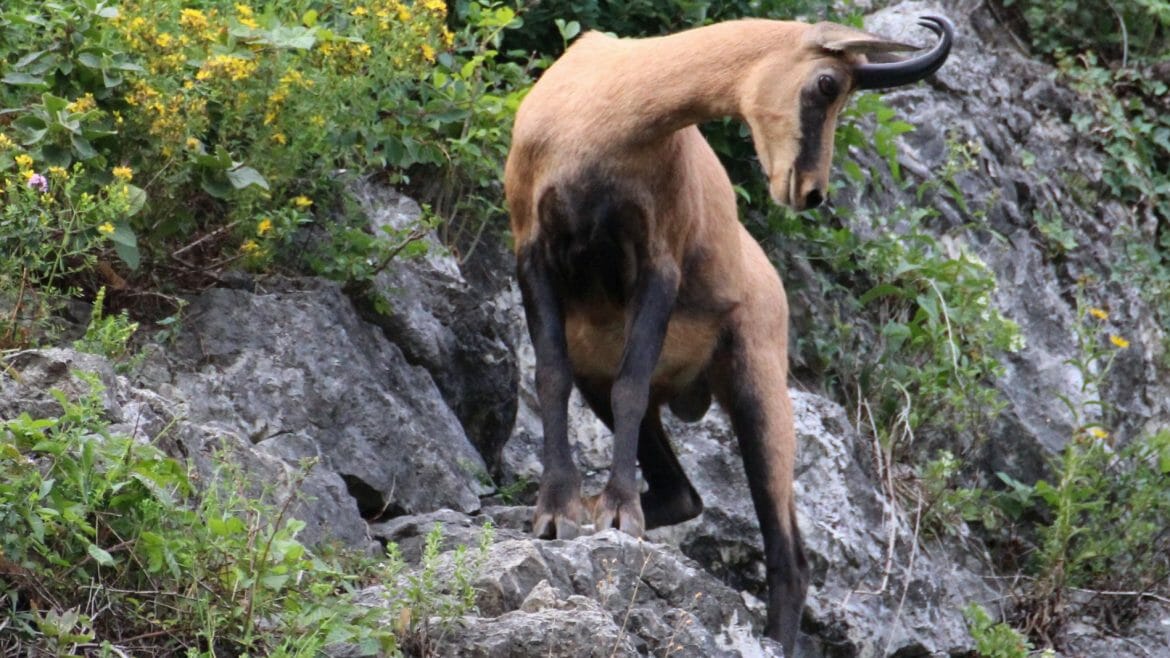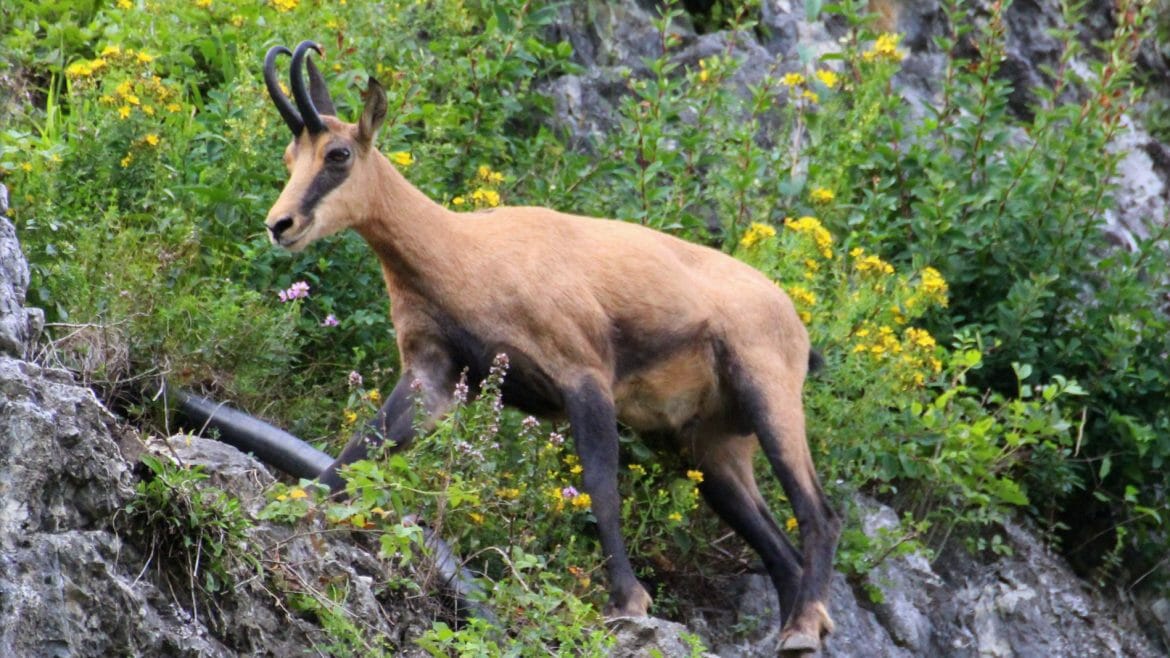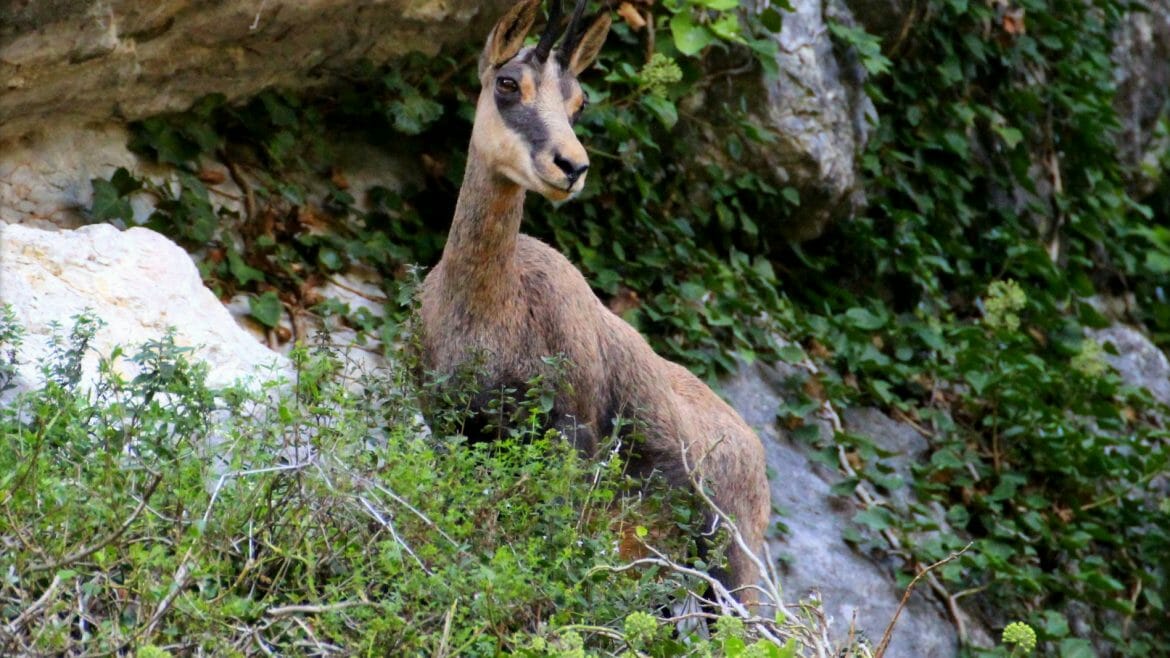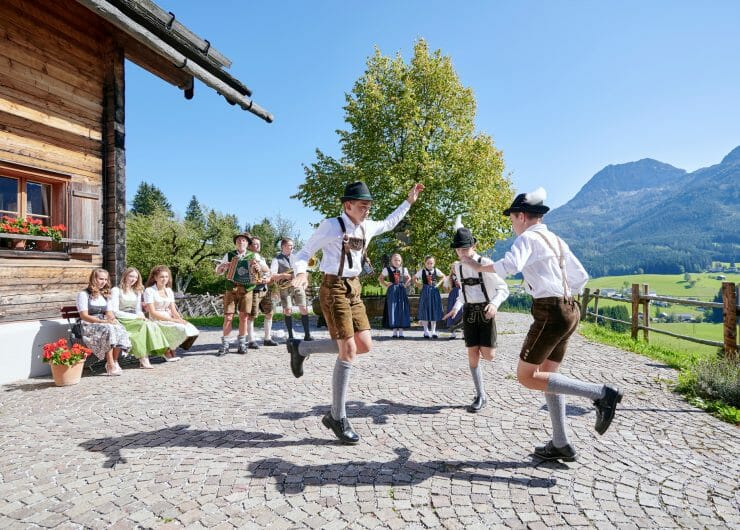
#1 The Samson Procession – When Strong Men Carry on The Tradition
Where do Salzburg’s strongest men live? Presumably in the Salzburger Lungau holiday region, where once a year Samson does the rounds. By this, we mean a figure out of wood that weighs up to 100 kg and is between five and eight metres tall. It all goes back to the very same Samson who caused a stir way back in the Old Testament with his superhuman strength. During the traditional processions in the Lungau communities, young men carry a figure dressed as a soldier on their shoulders through the streets. It’s extremely strenuous work. Incidentally, it’s not only locals who enjoy the Lungau superheroes, as “Samson carrying” has also been chosen by UNESCO as an intangible cultural heritage.

© Ferienregion Salzburger Lungau – Festival Samson parade in the Salzburger Lungau region
#2 “HUNDSTOA-RANGGELN” WRESTLING – HOGMOAR RATHER THAN HOGWARTS
We’re sticking with the theme of strong men. However, we’re changing scenery and directing our sights on the natural arena of the Hundstein mountain. Here, in the Salzburg Pinzgau region, one participant is crowned “Hogmoar” every year. It sounds a little like the magic school attended by Harry Potter, but it’s got nothing to do with that. “Hogmoar” is the name given to the winner of the “Hundstoa-Ranggeln” wrestling competition. During this duel, participants attempt to force their opponents on to their back through a combination of strength and skill. Incidentally, wrestling on the Hondstoa (Hundstein) isn’t a recent invention. First official mention of the tournament dates back to 1518. Back then the victor had the last word in arguments between farmers. Today that’s best left to the judicial system. That said, “Hundstoa-Ranggeln” belongs to SalzburgerLand in the same way as the magic wand does to Harry Potter.

© Edith Danzer – Trial of strength at the “Hundstoa-Ranggeln”
#3 FRITZ SENDLHOFER – ONE-OF-A-KIND BEARDED SALZBURGERIAN
A very special type of champion lives above the roofs of Zell am See. We’re talking about beard Olympia champion, Fritz Sendlhofer. His impressive facial adornment has already won several awards, and has even been named world-best in the “Garibaldi” category. However, beard wearing isn’t the only passion of the Pinzgau veteran. Fritz Sendhofler is a passionate collector of saws. Because he doesn’t like to keep these treasures all to himself, he has opened a private museum next to his house. You can marvel at more than 2,500 saws there, including some individual artifacts that have been around for more than 2,000 years.
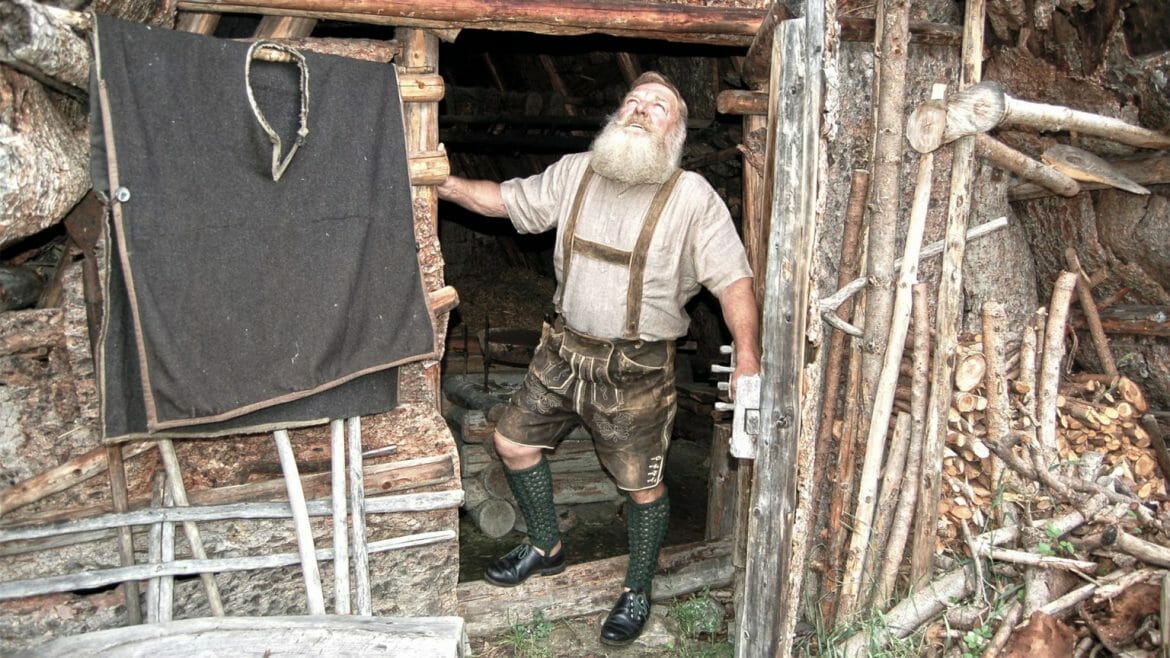
© Edith Danzer – One-of-a-kind Fritz Sendlhofer
#4 QUILL EMBROIDERY – FROM THE FORGOTTEN PEACOCK ART
From beard hair to peacock features. Walter Grübl and Herbert Kliebe in St. Martin am Tennengebirge work with the latter to make valuable threads that are used to embroider items such as rucksacks, bags, and lederhosen. The technique is called quill embroidery and hardly anybody today masters this fine art. Consequently, splitting valuable quills is a true master achievement. Finishing one workpiece takes between four weeks and two months; the list of customers is long. You’d better sign up to the waiting list now if you want to strut around like a peacock yourself.
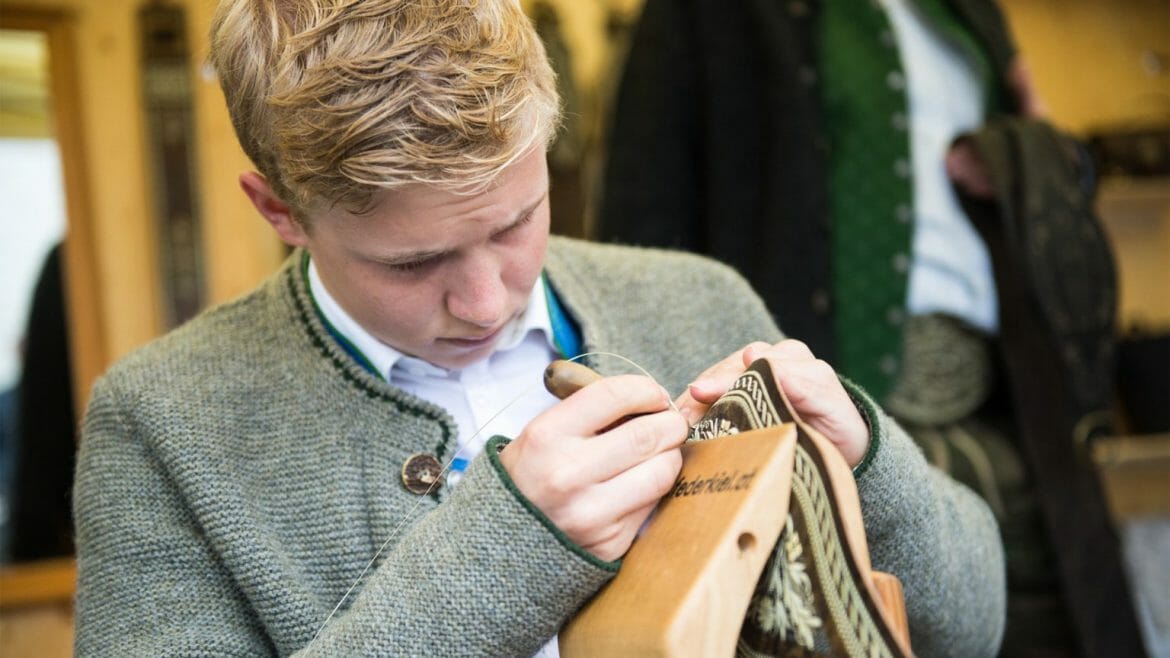
© SalzburgerLand Tourismus, Coen Kossmann – Finest craftsmanship at the Federkiel-Stickerei embroiderers
#5 HURRAY FOR THE CHAMOIS – CITY CHAMOIS ON THE KAPUZINERBERG MOUNTAIN
Staying with the animal kingdom. It appears that four-legged creatures also love the charm of Salzburg’s unique Barock façade. What else could have moved the chamois to set up home in the middle of Mozart city? For more than 70 years, they have been here enjoying the views over the UNESCO-protected Old Town. And the chamois have even got staff to ensure that they want for nothing. A city gamekeeper and forester takes care of the wellbeing of the protected animals. You’ll need a little bit of luck if you want to view them in the wild. But, it’s definitely well worth a visit to the Kapuzinerberg in any case. If only for the silhouette of Salzburg Old Town with the striking Hohensalzburg Fortress and the Mönchsberg that adjoins the Festungsberg mountain.
#6 CLASSICAL MUSIC HOTSPOT – THE SALZBURG FESTIVAL
Speaking of the Old Town, it was here a little more than one hundred years ago that the theatre enthusiast Max Reinhardt sent a letter to the Archdiocese of Salzburg. In the letter, he formulated the desire to put on a theatre piece on the Domplatz and asked for permission to do so. The Archbishop gave authorisation, and the Salzburg Everyman was born. Since then the Salzburg Festival has developed into one of the most renowned music festivals in the world and has ensured that the (premier) performances and avant-garde experiments have been of the highest calibre from the very start. Goosebumps are guaranteed at the latest when the sun sets in front of the unique backdrop of the Old Town and the calls of “Everyman” echo through the audience from afar. But it’s not just in the city of Salzburg, but also in the Pener-Insel, Hallein, that performances take place – a nice reason to pay a visit to Salzburg’s sister town. Incidentally, Max Reinhardt’s original letter still exists. It is stored well-packaged in the archives of the Archdiocese of Salzburg and is brought out in public on special occasions every year. Off to the Festival!
#7 THE ORGANIC VILLAGE OF SEEHAM – IT DOESN’T GET ANY MORE ORGANIC THAN THIS
Not far away from the city of Salzburg lies the idyllic Obertrumer See Lake. The small village of Seeham is situated on its western stores. This place has become a pioneer in Austria of all things organic. What does that mean in everyday life? Organic food is freshly cooked in the school and kindergarten kitchens, and there is a dense network of public transport and e-bikes. The local organic shop delivers groceries in an electric car and approximately 80 percent of the agricultural businesses in the community adhere to organic criteria in their production methods. Anybody who thinks that you can’t get more organic than that hasn’t visited the organic hotel, organic cheese dairy, and organic grain mill. In 2015 Seeham was awarded the Austrian climate protection prize in the category of “communities and regions”.
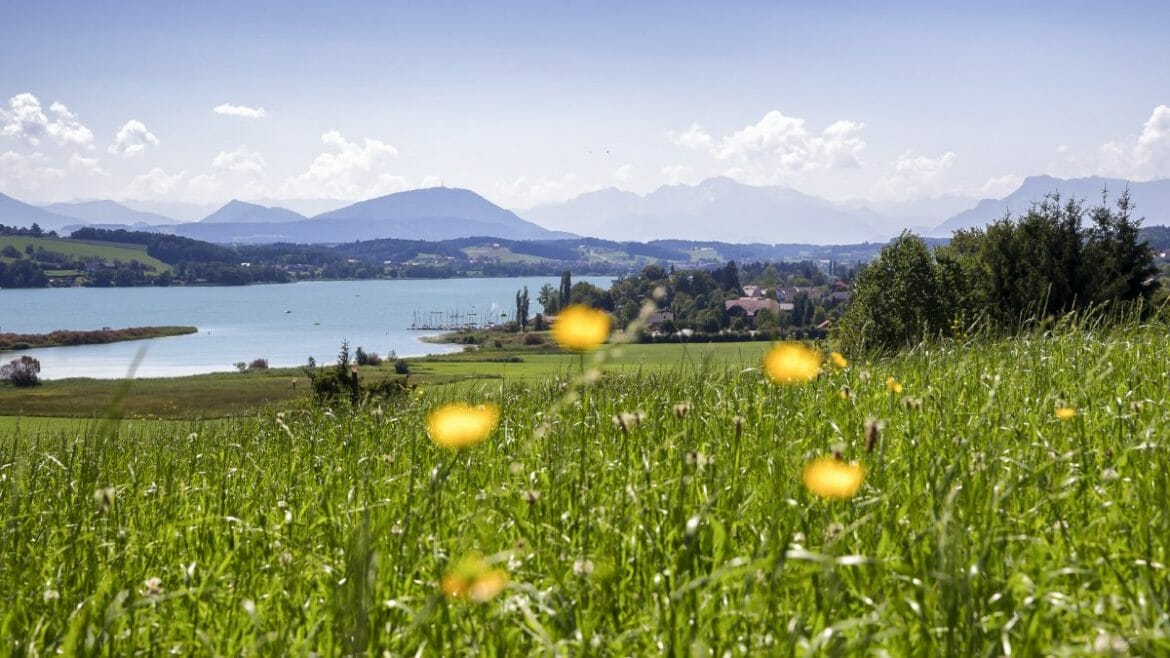
© TVB Seeham – Austria’s first organic village
8 PINZGAU SCHOTTEN – MARVELLOUS CHEESY CONES
Does the idea of organic cheese make your mouth water? If so, get ready for the next Salzburgerian speciality. We’re talking about Pinzgau Schotten. This is a dairy product that is still made according to traditional methods and has a taste reminiscent of parmesan and bacon. In earlier times Pinzgau Schotten were made from the leftovers of cheese and butter production and served up in poor households. Today these are specially crafted. Whey and buttermilk are flocculated before the resulting product is seasoned and smoked to produce the tangy flavour. Once the Schotten have dried, just like parmesan, they are grated over traditional Pinzgau meals such as Schottnocken dumplings, Schlutzkrapfen ravioli and Schottsuppe soup.

© Edith Danzer – Pinzgau Schotten, an almost forgotten cheese speciality
#9 SALZBURG’S HIGHEST SITUATED WORKPLACE – THE SONNBLICK OBSERVATORY
It is 1886. The Statue of Liberty is being dedicated in New York Harbour, Coca-Cola is on sale as a syrup for the first time, and the Sonnblick Observatory starts operating at 3,106 metres in the Rauris Valley in SalzburgerLand. The location for the novel facility was wisely chosen to fulfil its primary intention of contributing to research into high layers of air. Anybody asking themselves “what was the weather like around 1900?” will find the answer thanks to Europe’s oldest summit observatory on the Sonnblick. Long-term statistics for temperature, pressure, and sunshine can be viewed on the website. This is in keeping with the observation point’s status today as an internationally renowned research station, and the highest situated observatory in Europe. Because the daily commute for the employees would otherwise constitute a five-hour mountain hike, workers are transported up the mountain by the company cable car. Everyone else has to reach the summit of the Sonnblick by foot.

© Elke Ludewig – The Sonnblick Observatory at an altitude of 3,106 metres
#10 KRIMML WATERFALLS – NATURAL SPECTACLE WITH HEALING PROPERTIES
We’re changing elements and rushing from the lofty heights of the Sonnblick to the healing powers of the Krimml Waterfalls, where a breathtaking natural spectacle awaits. That said, the expression “breathtaking” is actually incorrect, as the Krimml Waterfalls are known for their therapeutic benefits towards allergies and asthma. The secret lies in the extremely tiny aerosols that are created by the water hitting the rocks and breathed in at the therapy site. Spending just one hour a day at the waterfall provides long-lasting relief from complaints such as allergic asthma. This has been confirmed by studies undertaken by the Paracelsus Medical University Salzburg (PMU). All those who don’t have any problems with the respiratory tract will still find the waterfalls impressive. At 380 metres in height dropping down in three levels, nature has created a monument that is second to none.

© TVB Krimml – Krimml Waterfalls with its visible spray mist
*Please note: as a result of the current Covid-19 situation, not all businesses are currently open and some experiences and events may not take place. Our Guide gives an overview of the current situation and offers information about a relaxed and safe holiday in SalzburgerLand.


